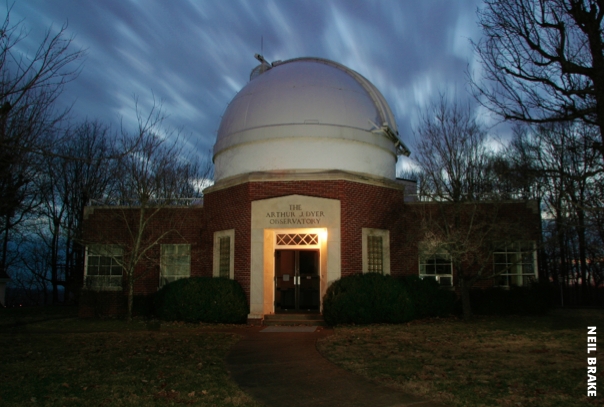Reaching for the stars
I am a total astronomy geek.
In elementary school, I cleaned out the school library’s supply of astronomy books, many of which, I later learned, were at least 10 years old and spectacularly inaccurate. For example, even by 1966, it was well known that there was no chance that Venus had a planetwide boiling sea, but boy that sure was a fun illustration in one of the astronomy books I devoured.
When I was old enough to do yard work for neighbors to earn a little money, the first thing I did was save up to buy a backyard telescope.
I took a year of astronomy in college (even communication students had to take science!), and when I began a graduate program at Vanderbilt, the first class I took was Astrophysics. Professor David Weintraub led me and my classmates back through the wonders of the cosmos, and even encouraged me to submit my term paper to a popular astronomy journal, which published it. I’ve spent most of my life as a writer, and that is still one of my greatest professional thrills.
And since (did I mention this?) I’m a total astronomy geek, that also means I’m a total observatory geek. The fact that humans have built places designed to study and peer into the cosmos is one of the things that makes me proudest about us as a species. That and side two of “Abbey Road.”
So, naturally, I’m completely enthralled that Vanderbilt has its own observatory, Dyer Observatory, located atop a wooded hillside adjacent to Radnor Lake State Natural Area.
Dyer has had its telescopes trained on the sky since 1953, and has survived long enough to be listed on the National Register of Historic Places. One reason it is historic is that it represents the best impulses of our community. Basically a lot of people from Nashville and beyond were devoted to the idea of having a really good observatory here. They came together, brought their civic impulse and their love of science and astronomy, and build this place, mainly by donating the skills and materials of their businesses.
One of those people was Arthur J. Dyer, the president of the Nashville Bridge Company, who, after hearing Vanderbilt astronomer Carl Seyfert speak at a Rotary Club meeting, asked for his help with a sundial at his house. The men became friends, and Seyfert eventually asked Dyer for help building an observatory.
It was a team effort. Dyer’s company built the revolving dome for the telescope. The Oman Construction Company built the steep road up to the peak of the hill. Nashville Electric Service donated the power lines, Southern Bell donated the phone lines, and Corning Glass donated optical glass for the telescope’s objective prism. Many other Nashville companies heard about the project and contributed. The Research Corporation of New York and Perkin-Elmer Corporation of Connecticut helped fund the telescope, and the National Science Foundation kicked in $12,000 (which went a lot further in 1949), as well.
If an observatory can be cozy and homey, Dyer is. Its display cases are full of vintage astronomical instruments, the kind of cool-looking devices made of brass and with knobs and dials that can be used to carefully calibrate and measure the motions of the planets, the parallax of the stars and maybe even the sense of wonder.
At the back of the building is the library and event room, which has big glass doors leading out onto the back patio. This is a great place for a party, as my wife Sharon and I discovered last year when we hosted a gathering there for our wedding anniversary. It was a clear night and guests could walk upstairs to the telescope and, under the knowledgeable guidance of astronomy graduate student Billy Teets, receive a tour of the solar system and beyond.
Students and teachers and scout troops come here on public nights to look through a telescope, some of them for the first time. There are summer camps and special events.
Dyer is even a place to hear music beyond the music of the spheres; for several years it has hosted a concert series, Bluebird on the Mountain, which features outdoor performances by songwriters.
We all need beauty and wonder in our lives, and Dyer is a place that supplies both.
Follow Wayne on Twitter: @woodw

Leave a Response